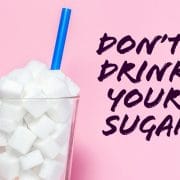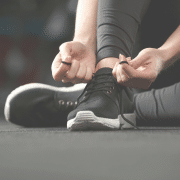Find Your WHY And You’ll Find Your Way

A common goal for many people is to lose weight. In fact, if you use Google search, how to lose weight is in the top 3 most popular questions. With a multi-million dollar weight-loss industry out there and a worldwide obesity epidemic, it’s clear that just setting a goal to lose weight isn’t enough. Even if you do lose the weight, it often comes right back on after you’ve reached the goal. What if there was a deeper reason why you want the weight off far beyond what the scales say? Your most powerful motivation source is YOU, so connecting to what makes YOU tick could be the key.
There is a saying by Friedrich Nietzsche – “He who has a why to live can bear almost any how.” Anthony Robbins then took this quote and reworded it to the catchy ‘Find your WHY and you’ll find your WAY’. Your WHY is connected to your values, which reflect what is really important to you. It’s the fire in your belly, your mojo, your core motivation that connects you to the goal on an emotional level.
Researchers like Deci and Ryan, founders of Self-determination theory, have shown that if you find your own reasons why a goal is important to you, and are emotionally connected to this goal, you are more likely to achieve it.
Your WHY needs to come from within you (the geeky science term is ‘self-determined intrinsic motivation’ and an even better, but similar form of motivation is ‘Intrinsic motivation’). Weight loss maybe what you want, but to stick to a weight-loss plan you need a deeper reason than getting into size 8 jeans.
Here are some examples of WHY’s around weight loss that have an emotional connection to the goal:
- I want to have more energy so I can play with my kids
- I want to live pain free so I can live my life feeling well
- I want to love myself again so I can be at my best
- I want to live a long life so I can be here for my grandchildren
- I want to feel happy again
- I want to buy the clothes that make me feel comfortable
- I want to bounce out of bed in the morning and look forward to the day
Your core reason for WHY you want to reach your goal is unique to you, but it must connect with you on an emotional level.
What’s your WHY for achieving your goal that you have an emotional connection with?





 Most of us think we need to sweat it out at the gym or go for a long run to be active and if we miss those opportunities due to our busy lives, we beat ourselves up. What counts as exercise has been institutionalised to the point that if it’s not a dedicated chunk of time in a dedicated place, it doesn’t count. There are a lot of ‘should’s’ going on – I should exercise, I should go to the gym. It’s these ‘should’s’ that can set us up to fail, over and over again. Sound familiar?
Most of us think we need to sweat it out at the gym or go for a long run to be active and if we miss those opportunities due to our busy lives, we beat ourselves up. What counts as exercise has been institutionalised to the point that if it’s not a dedicated chunk of time in a dedicated place, it doesn’t count. There are a lot of ‘should’s’ going on – I should exercise, I should go to the gym. It’s these ‘should’s’ that can set us up to fail, over and over again. Sound familiar?


 There are fixed, heritable genes (such as skin and eye colour) and there are genes that can be influenced daily according to our lifestyle. These genes are continually directing the production of proteins that control how your body functions at every second of the day. Genes turn on or off (sometimes at a rapid rate) only in response to signals they receive from the surrounding environment – signals that you provide based on the food you eat, the exercise you do (or don’t do!), your quality of sleep, sun exposure and so on. Genes are like light switches that turn on and off and influence every element of body function. So, you are in the driver’s seat to take control of your genes expression. Here are some tips for you:
There are fixed, heritable genes (such as skin and eye colour) and there are genes that can be influenced daily according to our lifestyle. These genes are continually directing the production of proteins that control how your body functions at every second of the day. Genes turn on or off (sometimes at a rapid rate) only in response to signals they receive from the surrounding environment – signals that you provide based on the food you eat, the exercise you do (or don’t do!), your quality of sleep, sun exposure and so on. Genes are like light switches that turn on and off and influence every element of body function. So, you are in the driver’s seat to take control of your genes expression. Here are some tips for you:



